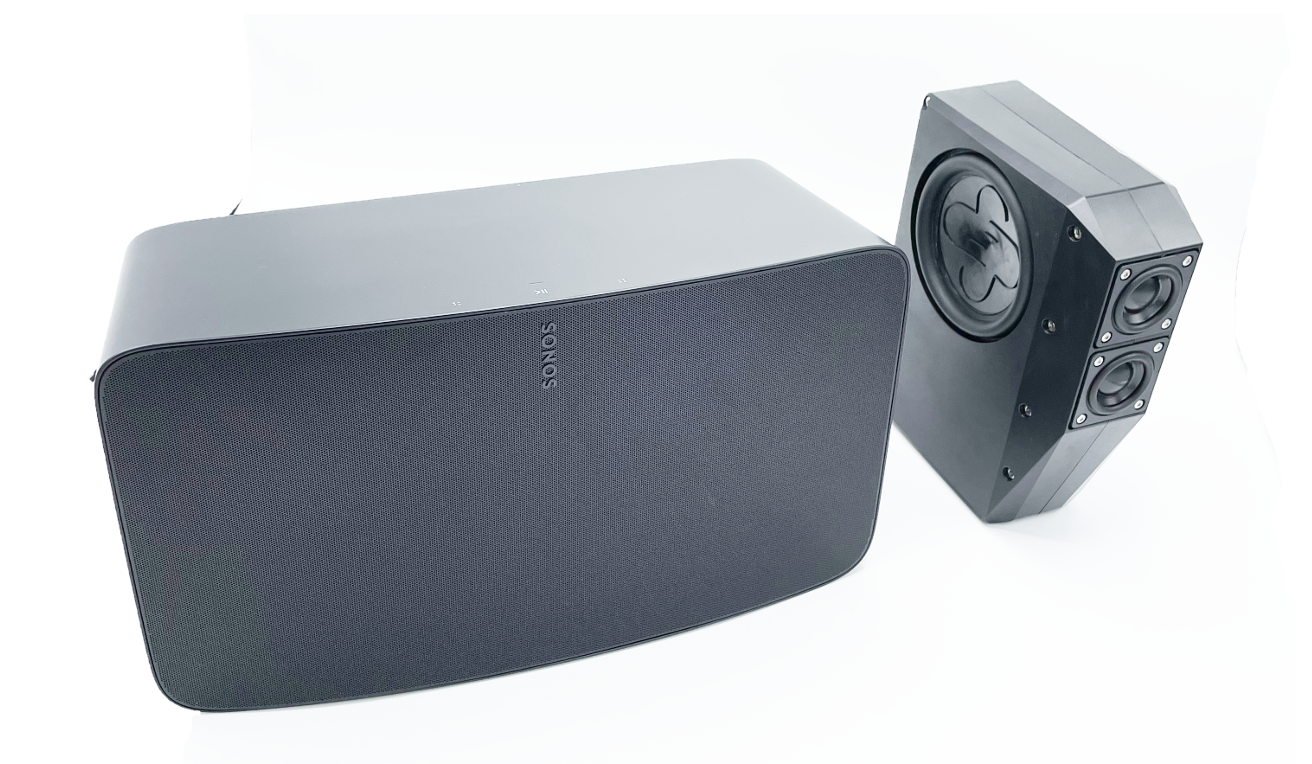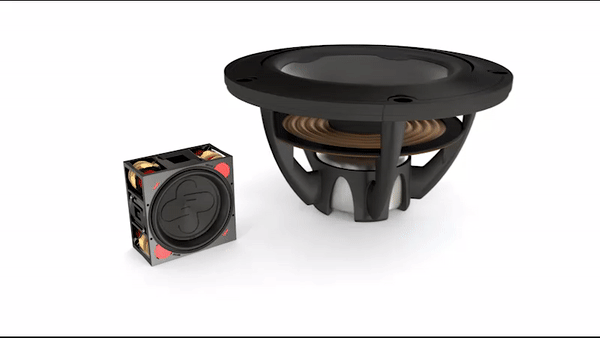
The Sonos Arc Ultra is the company's new high-end Dolby Atmos soundbar, featuring 9.1.4 channels of sound, and a built-in 'revolutionary' subwoofer that uses a new kind of speaker tech, called 'Sound Motion'.
The Sonos Arc Ultra was one of the worst-kept secrets in tech, with many, many leaks revealing nearly all the information beforehand, but now it's finally official – and it's coming on October 29th 2024, with a price of $999 / £999 / AU$1,799, which will put it in the more premium options among the best soundbars, but that's no surprise.
It's unclear whether the Sonos Arc Ultra will replace the original Sonos Arc, which has had price drops to around $719 / £719 (no current price drop in Australia) – if it drops to that price permanently (or lower? We can hope), it could make sense to have both in the line-up.
Basically, the Sonos Arc Ultra is the most powerful soundbar Sonos has ever made, and looks set to deliver its best Dolby Atmos spatial audio thanks to more speaker channels – and perhaps with enough built-in bass to make it feel like you don't need a subwoofer. We'll have to wait for our review to see how well all of that works, but here's what we know in the meantime.
Sonos Arc Ultra: price and release date
The Sonos Arc Ultra costs $999 / £999 / AU$1,799, and it's released on October 29th, 2024.
Pre-orders are available beforehand, and it's available in packages with the Sonos Sub 4 (also new, and priced at $799 / £799 / AU$1,299 on its own) and more of the best Sonos speakers for a discount compared to the total price.
Sonos Arc Ultra: Features
The Sonos Arc Ultra's biggest upgrade is obviously its speaker arrangement. There are fourteen speaker drivers in total, arranged in what Sonos describes as a 9.1.4-channel configuration – though the four height channels is a little controversial, as I'll come back to in a moment.
There are seven tweeters with waveguides to steer the sound for spatial audio, there are six mid-range drivers to add depth, and there's one woofer for bass.
The woofer uses Sonos' new 'Sound Motion' speaker technology, and the company says that this "proprietary four-motor, dual-membrane woofer delivers exceptional bass in a revolutionary flat, compact design". The idea is to deliver far more bass than has previously been possible in a body as small as a soundbar.
Now, the controversial part: Sonos' official info says that the speaker has two upfiring drivers for height, but that doesn't really fit with the channel count being 9.1.4, since the last part refers to the number of height channels. I've requested clarification from Sonos.
Elsewhere, you've got Sonos' usual Wi-Fi streaming support, plus Bluetooth for the first time in its soundbars.
Trueplay tuning for more precise sound will be available on Android as well as iOS for the first time here, which is great – it makes a difference to the spatial audio.
There is a new Speech Enhancement tool that enables you choose what level of boost you want to give dialog using a slider, which sounds like a nice touch – I like the idea of just raising it a little for clarity, but keeping the overall balance of the sound as close to the original audio as possible.
One major downside is that it appears that there will still only be a single HDMI eARC port, and no passthrough ports. So you'll still lose the use of your TV's HDMI port if you connect the Sonos Arc Ultra to it. Given that the likes of the Samsung HW-Q990D offer not only multiple HDMI ports (so you actually add to the number of ports you have by using one), but with 4K 120Hz support for gaming, Sonos is way behind the times here.
Sonos Arc Ultra: Design
Given that several of the best Sonos speakers have gone through a redesign recently with a new, subtly changed, design language (see: the Sonos Era 100, the Sonos Era 300 and the Sonos Move 2), I was hoping for the same from the Sonos Arc.
From what we can see so far, it looks borderline identical to the original, though – however, it is 18% smaller by volume, according to Sonos. The dimensions of the Arc Ultra are 2.95 x 46.38 x 4.35 inches (75 x 1178 x 110.6mm), and it weighs 5.9kg.
As before, you'll have a round side profile, a hard plastic grille, the option of white or black finishes, and connections in a central recessed hub in the back.
The touch controls have been moved compared to the original, seemingly further back, and there will be a Bluetooth pairing button.
Sonos Arc Ultra: Sound Motion speaker tech explained
The most exciting part of the Sonos Arc Ultra is the new speaker tech in its woofer, called Sound Motion. This was developed by a company called Mayht, which Sonos then acquired – and the Arc Ultra is the first product to use it.
Originally called HeartMotion, this tech can basically halve the size of speakers by using an innovative design that pushes sound from both sides at once.
When Mayht first introduced the tech, it used Sonos products as its comparison, claiming that something with the size and quality of the Sonos Five could be fit into the body of the Sonos One. Sadly, Mayht was acquired just before I ever got to have the technology demonstrated to me, but I discussed it with the company, and it was incredibly clever.

A major part of it is the way it drives sound from two sides at once, which has the advantage of reducing vibrations in the body, because the forces from driving in two opposing directions cancels each other out. This is a principle Sonos knows well, because it uses a 'push-push' configuration in all of its subwoofers – but that's done by using two different speakers, so actually increases size and complexity. 'Sound Motion' should make it very small, and very simple.
This should have two potential advantages in the Sonos Arc Ultra. The first is a massive improvement in the bass power even without a subwoofer, because the company can simply fit much more woofer power into the same space with this tech. The best soundbar I ever heard for bass that didn't have its own sub was the Devialet Dione, and that was achieved by having eight individual woofers arranged in a push-push configuration (so it wouldn't vibrate right off your TV stand). This made it massive both in terms of its size and price, but it worked.
If the Sound Motion driver can summon even a fraction of that power, then the Arc Ultra could be something quite special.

The second advantage is achieving the bass power in a small woofer configuration leaves more space to these extra angled tweeters to help create convincing 3D sound to challenge the best Dolby Atmos soundbars.
That certainly seems to be the case here, with seven tweeters now included. Time will tell how effective the redesign has been overall.







